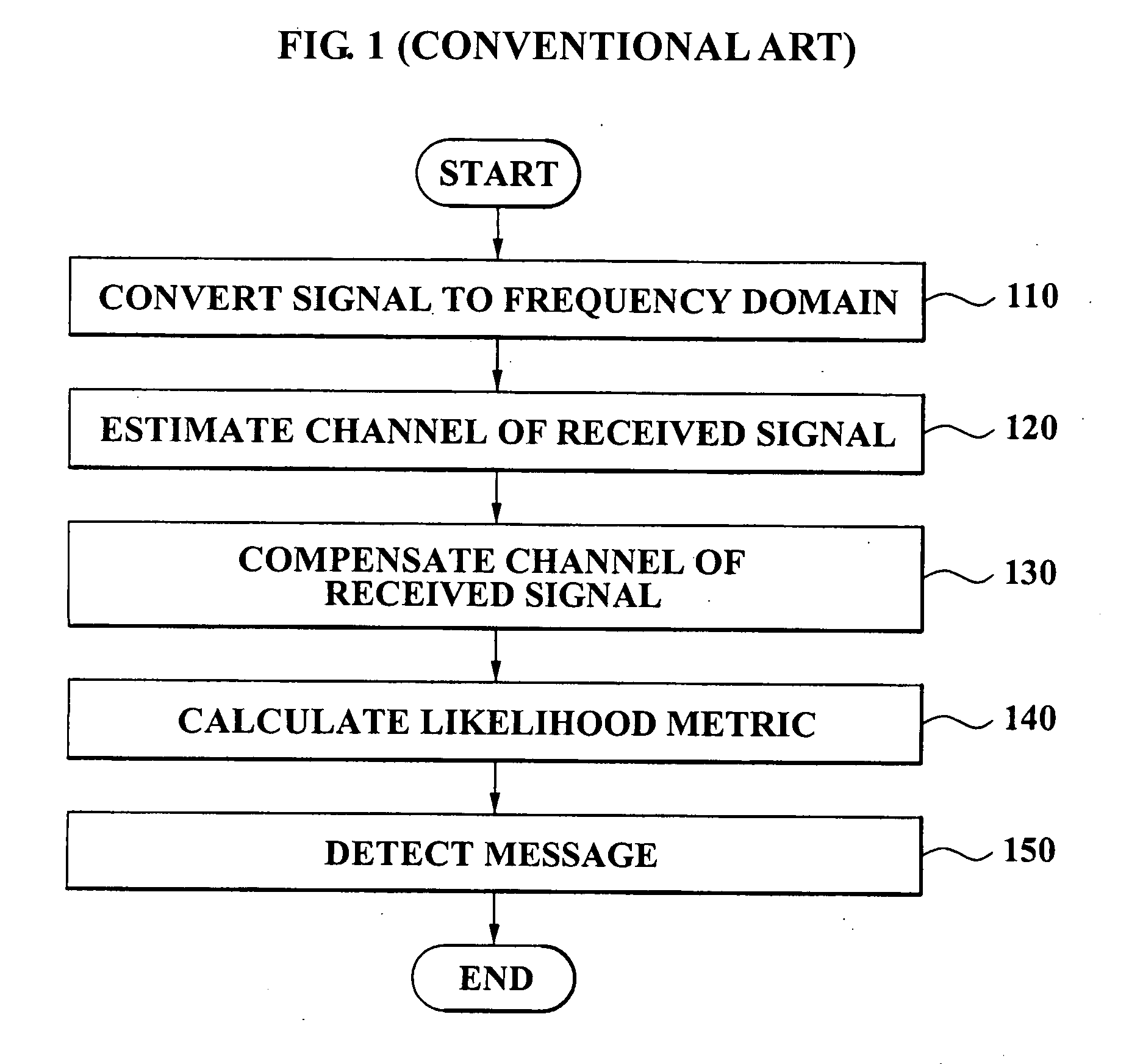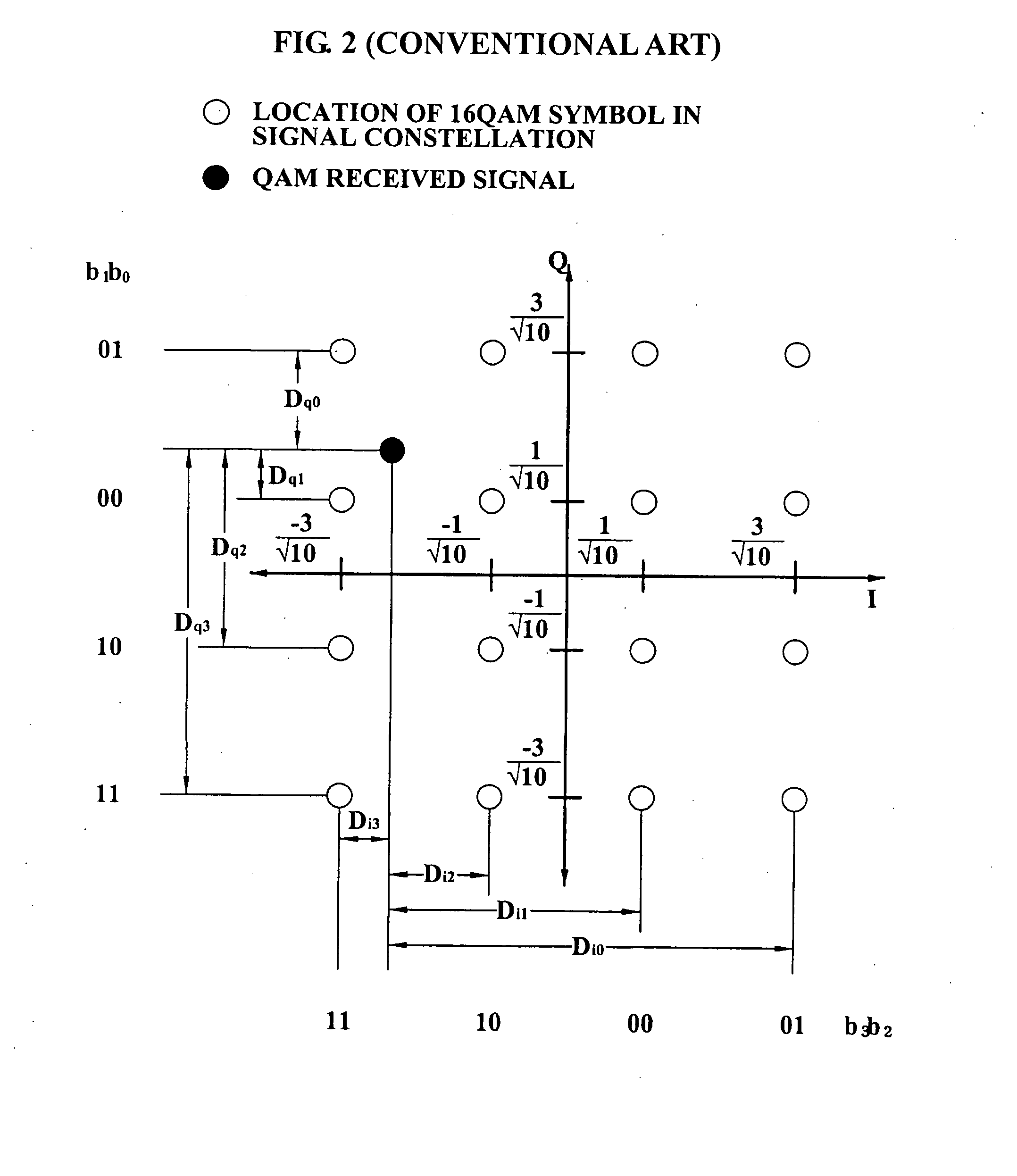Method and apparatus for calculating likelihood metric of a received signal in a digital communication system
a digital communication system and likelihood metric technology, applied in the direction of amplitude demodulation, coding, code conversion, etc., can solve the problems of not being able to effectively utilize bpsk and bfsk, not being able to detect messages, and the receiver end may not distinguish the difference in signal level, etc., to achieve the effect of reducing the complexity of a calculation and increasing the accuracy of the calculation
- Summary
- Abstract
- Description
- Claims
- Application Information
AI Technical Summary
Benefits of technology
Problems solved by technology
Method used
Image
Examples
Embodiment Construction
[0051] Reference will now be made in detail to embodiments of the present invention, examples of which are illustrated in the accompanying drawings, wherein like reference numerals refer to the like elements throughout. The embodiments are described below in order to explain the present invention by referring to the figures.
[0052]FIG. 4 is a flowchart illustrating a likelihood metric calculation method according to an embodiment of the present invention. As illustrated in FIG. 4, the likelihood metric calculation method according to an embodiment of the present invention estimates a channel of a received signal in operation 410, compensates the channel based on the channel estimate in operation 420, calculates a region variable based on the channel estimate in operation 430, compares the region variable with the compensated received signal in operation 440, and calculates a likelihood metric according to a result of the comparison in operation 450.
[0053] A transmitted signal of a ...
PUM
 Login to View More
Login to View More Abstract
Description
Claims
Application Information
 Login to View More
Login to View More - R&D
- Intellectual Property
- Life Sciences
- Materials
- Tech Scout
- Unparalleled Data Quality
- Higher Quality Content
- 60% Fewer Hallucinations
Browse by: Latest US Patents, China's latest patents, Technical Efficacy Thesaurus, Application Domain, Technology Topic, Popular Technical Reports.
© 2025 PatSnap. All rights reserved.Legal|Privacy policy|Modern Slavery Act Transparency Statement|Sitemap|About US| Contact US: help@patsnap.com



